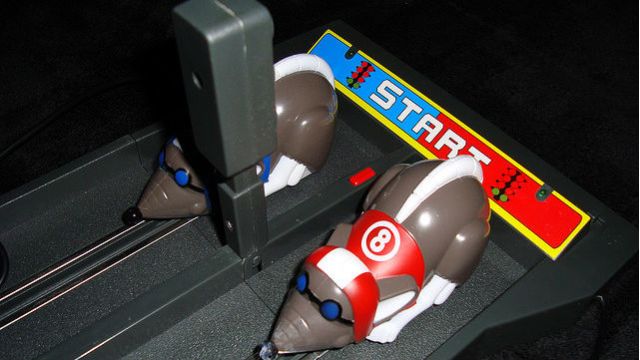Unlocking Your Organization’s Most Valuable Resource – Knowledge and Wisdom

Every company has both information and knowledge. What’s the difference? Knowledge is something that’s actionable and that generates value for the receiver. Information, on the other hand, is not actionable. It’s simply compiled data.
For example, if you received a list of all the sandwich shops in your state, you’re now informed, but you don’t have any real knowledge of which one is the best sandwich shop to have lunch at. However, if someone you trusted who knew your tastes recommended one of the sandwich shops, you now have something actionable. The person shared with you some knowledge based on his or her experience. You now know exactly what action to take. That’s knowledge.
The good news is that knowledge increases in value when it’s shared. Think about it… have you ever learned from a customer? Of course you have, but you didn’t learn by giving them data and information. More than likely, you were in a dialog; you shared your knowledge and they shared some of theirs. In the process, you both learned something new and valuable.
Unfortunately, human nature is to horde and protect knowledge because we subconsciously think we only have a certain amount of knowledge in our head. If this was a fact, then we’d certainly want to covet it dearly. In reality, each person is a fountain of new knowledge and ideas based on insights from personal experiences, meaning the knowledge well is deep and won’t run dry. Additionally, when you share your knowledge, you don’t lose it. You still have your ideas, and by sharing them in dialog with someone, you have the potential to improve those ideas beyond what you previously thought possible. That’s why knowledge sharing is so powerful.
Knowing that knowledge is valuable, it makes sense to develop knowledge sharing networks within your organization. The question is, how do you create one?
Knowledge Pull
People tried knowledge sharing in the 1990s and early 2000s, but few had luck with it. Most of the knowledge they were sharing was really just information, and many companies made the sharing process too complex. To make knowledge sharing work, you need to engage in a process I call “knowledge pull,” where you create a shared understanding of what knowledge is, and then pull the knowledge from them.
First, realize that all knowledge needs both context and content. For example, a good storyteller can’t just give you the punch line. They have to set it up first by giving you context—the punch line that follows is the content. The same is true with your knowledge pull approach. You have to get people to share the context before the content has any meaning.
So let’s suppose you have a sales team and you want to pull knowledge from them. To begin, you’d set up an internal secure private cloud for your sales force knowledge base that all the salespeople have access to. Then, you ask them for two short paragraphs a month.
Why only two paragraphs? You don’t want to take a lot of their time. Additionally, the paragraphs you’ll get will be so powerful that you’ll have a lot of knowledge to learn from and act on. If you have 100 people on your sales team, you’re getting 100 knowledge entries a month—that’s a lot of knowledge!
The process is very easy. Each paragraph is answering a question. The first is a context question; the second is a content question. Here’s an example of how the questions would work in terms of setting up the context and content:
° Question One: “What was the biggest mistake you made last year with a customer?” This sets up the context. Let people know that you only want one short paragraph for a reply.
° Question Two: “What did you learn from your mistake?” This is the content—where the real knowledge lies. Again, request just one short actionable paragraph.
To encourage participation, give examples from the company’s executive team, showing the CEO’s, CFO’s, and other C-suite executive’s biggest mistakes and what they learned from them. After all, if the company leaders won’t share, why should anyone else? But if the top executives are sharing, then everyone else will feel compelled to share as well. The executives’ participation makes the process both “safe” and powerful.
If each of the 100 salespeople posts their biggest mistake and what they learned from it, you now have 100 bits of knowledge and powerful lessons that you can categorize. Then, the next month, you ask two more questions.
° Question One: “What was the most important personal strategy you implemented last year?” (Context)
°Question Two: “What did it do for you and your customers?” (Content)
Keep doing this two-question approach every month and your company will quickly have a wealth of actionable knowledge that can be used to rapidly solve problems and spread innovation.
Does anyone lose any of their knowledge by sharing it? No. Does the entire organization gain exponentially through the knowledge exchange? Yes! And if people leave, due to retirement or other reasons, at least you’ve captured some of their best knowledge instead of letting it all walk out the door. When someone new comes on board, you simply have him or her access the sales force knowledge base network and start learning, engaging…and contributing.
Wisdom Pull
Once you get your knowledge network growing, you can take it a step further by tapping into your company’s wisdom and creating a wisdom base.
What is wisdom versus knowledge? I define wisdom as a guiding principle that can usually be expressed in one sentence and that tends to be timeless and cultureless. For example, the saying “Do unto others as you would have them do unto you” has been around for a long time. It’s one powerful sentence that many people use as a guiding principle. If you’ve ever read a quote that resonated with you, it was likely a one-sentence message that helped guide your thinking and actions.
You can tap into the wisdom your team holds by creating a wisdom base where everyone shares the guiding principles they use that help them rapidly solve problems and accomplish their work. The process is simple: Tell everyone that you want their guiding principles and wisdom stated in one sentence. Ask for one sentence a month. If someone can’t articulate their wisdom yet, that’s okay. Allow them to post a quote that contains a guiding principle they find highly useful from someone else such as Einstein, Gandhi, and other great thinkers.
The fact is that each person has a wealth of wisdom inside. However, most people don’t keep track of it, much less write it down. Here’s a great way to start tracking some of the wisdom you share every day: When you’re speaking with someone, you often say some powerful personal wisdom that flow off your lips naturally. You know it when you hear it, and you probably wish you could stop and write it down. But if you’re like most people, you don’t want to interrupt the conversation, so you keep talking, thinking you’ll remember that great quote you said later. However, the powerful sentence goes into a part of your brain that’s short-term memory, and unless you say it again or write it down immediately, you’ll forget it.
Next time when you’re talking and you say one of your powerful guiding principles, stop and repeat it. By doing so, you’re shifting the words into a different part of your brain that gives you more time to write it down later. By saying it a second time, you’ve given yourself five to seven hours to write it down before it’s long gone. As a side benefit, the listener gets to hear the wisdom again, which helps make it stick in his or her mind too.
Again, everyone is loaded with wisdom. You simply have to pull it from yourself and others so everyone can learn and benefit from each other’s experiences.
Start Sharing
Information is static and can be kept in a filing cabinet. Knowledge and wisdom are dynamic and need to be in motion—they need to be set free. By sharing knowledge and wisdom using a secure digital network, everyone in your organization can get smarter faster. As a result, those in your company will generate more and better ideas, develop more meaningful relationships with each other and with customers, and ignite the spark for true innovation and long-term profits.
###
DANIEL BURRUS is considered one of the world’s leading technology forecasters and innovation experts, and is the founder and CEO of Burrus Research, a research and consulting firm that monitors global advancements in technology driven trends to help clients understand how technological, social and business forces are converging to create enormous untapped opportunities. He is the author of six books including The New York Times best seller Flash Foresight.





